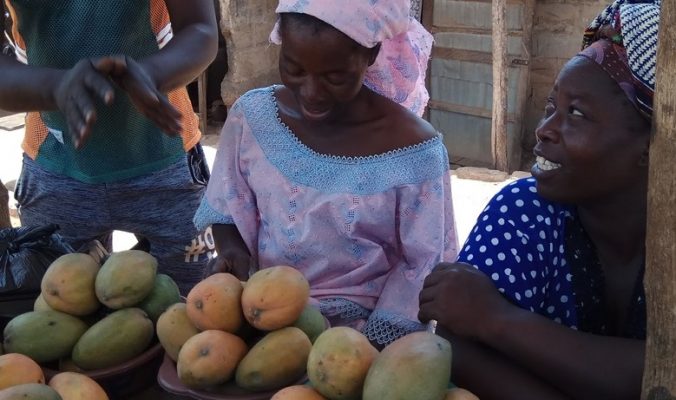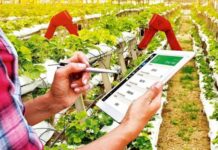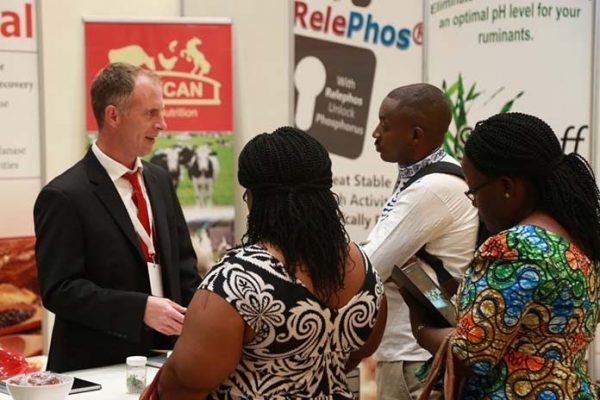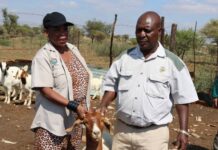“The way we measure success reflects our values, vision, and the results we expect“
by : Dr. Nimrod Israely – Founder and CEO – Biofeed Ltd
This article tackles general problems common to the Agri-sector in rising economies.
In 2015, “736 million people lived below the international poverty line of US $1.90 a day” per person. Out of those, the majority, 413 million, are in sab-Saharan African countries [>><<].
If we thought, “can it get any worse?” then “the global pandemic could increase global poverty by as much as half a billion people” [>><<]. Yes, it can get worse!
The
SDG brings a beautiful approach, but it seems to be somehow detached from
reality and with little or no chance to achieve its goals.
Why are the SDGs not achievable in the set time frame?
To get the answer, we should analyze the specific elements. Let’s focus on the two most urgent goals; #1 – No Poverty and #2 – Zero Hunger.
Riding poverty and hunger seems to be a distant goal, but not because there is not enough money or food in the world.
There is enough money to supplement the daily income to $1.95 per day, so there will be No Poverty, and to feed all the hungry people so there will be Zero Hunger.
If we give the poor $1.95 per day and feed them, we will achieve goals #1 and #2. However, will it solve those problems? This is a clear, NO!
According to SDG #1, a person who is having $1.95 per day is no longer in poverty. Instead, he becomes ‘simply’ POOR. Is that what we want?
Sure NO. Therefore, the updated goal should be PROSPERITY and abundance for all.
The same is with SDG #2; having people NOT in hunger, meaning they will be less hungry, eating the most basic foods. Once again, is that what we want?
Sure NO. Therefore, the updated goal should be people that are Well Fed. Not hungry becomes merely a milestone on the way to – Well Fed.
Let us recalibrate the No Poverty and Zero Hunger SDGs. We should focus on PROSPERITY and ABUNDANCE rather than on No Poverty and Zero Hunger.
The goal for daily income should be set much higher, enabling fulfilling the above-updated goals, for example, by setting a GLOBAL MINIMUM WAGE.
Think that we are saying to a child that we expect him not to fail in his school exams and not get under 50 (from 100). Now all his efforts are dedicated to getting over 50, which means 51 is fine, and he will be satisfied with it. He may get just a little bit less here and there and then get a score lower than 50.
However, if we recalibrate expectations from “not failing” to “over-perform and success,” and if we tell him how smart he is and that with some help from a tutor, he can do well over 75 points, we all know the result will be far over 50.
The goals we set, and the way we measure achievements, predetermine our success.
PROBLEMS OR SYMPTOMS?
I wish to challenge by asking, is the UN SDGs presenting us Root Problems or the Symptoms of those Problems?
In my view, poverty, hunger, health, the state of the environment, and the other SDGs describe visible Symptoms, not the Root Problems.
Coping with Symptoms can be short-term solutions or answers to Problems, but it is never the long-term solution since it doesn’t cure the Root Problems. Hence, it is not sustainable.
Maybe we should be open, honest, and directly ask, what are the Root Problems?
Fixing a well-defined problem is always better than trying to fight symptoms.
LONG TERM SUSTAINABLE APPROACH SOLUTION
This introduction says that the issues presented in the UN SDGs are not the concern of those who “have” like upper classes’ people.
Meaning, the very LOW INCOME of people is the ROOT PROBLEM to many of the world’s wrongs. Many wrongs can be fixed when peoples’ income will be higher.
If so, how can we sustainably increase peoples’ income?
We can do it by creating an additional income source or increasing the income from our current activities.
No matter which path you chose, you should always ask yourself, “Do I create more/same/less value?” You should invest only in activities that increase the Added Value of the goods or services you sell.
Added Value (also referred to as EBIDTA) is defined as:
The amount (price) paid for the goods or services] – The total production cost of those goods or services] = Added Value
As long as sub-Saharan, and other suffering poverty areas, will continue selling goods and services of low Added Value, the poverty state will continue.
In contrast, by focusing on increasing the Added Value of goods and services, we also increase the number of high Added Value jobs and with it raise the average income.
Yes, the future of all UN SDGs, as the future of hundreds of millions in Africa and Asia, depends on how much and how fast they can increase the VALUE of what they create to sell goods and services for a higher Added Value.
Increasing the Added Value will take people and nations from Poverty to Prosperity instead of “to less poverty.”
Prosperity will enable them to move away from Hunger toward Abundance. Then we will be able to say that we achieved the ultimate goal.
Of course, this should be done with the support of their governments, organizations, and the business community. Our next question is – HOW can we increase the Added Value of our products and services?
Unlike donations, subsidies, loans, and grants, jobs create a sustainable income and a healthy economy that contributes to the practitioner and the whole world.
Another question we should ask is, “In what field of practice should we focus on creating many more high Added Value jobs?”
This question’s answer is relatively straightforward; most of the people living in poverty are in the sub-Sahara region. The livelihood of over 50% to 75% of them is coming from Agriculture.
Now it is evident; we should start by focusing the efforts and investments on the agri-sector.
This way, we involve a large portion of the affected population; we energize the economy to create high Added Value jobs.
BETTER TOMORROW REQUIRES TO FOCUS TODAY
It is not enough to say, “focus on the agri-sector”; we are obligated to be specific enough that we know where to focus our efforts.
Focus is essential because, unfortunately, in emerging economies, many farmers produce zero or even negative Added Value. Often this is the result of growing crops that have very little or no potential to create significant Added Value.
Farmers growing such crops are doomed to remain in poverty and may be suffering hunger as well. Hence, our help should be by directing them to cultivate higher Added Value crops.
Now we know, we should focus on growing crops having the most significant potential to generate high Added Value revenue.
ADDED VALUE AT THE STATE LEVEL
Farmers are not the only ones who need to improve their Added Value, so is the state.
A country can increase its Added Value through exports of high Added Value goods and services it is producing.
Why should export be a preferred means to increase Added Value?
The principle is elementary to understand – a poor farmer selling produce to a poor consumer can sell his produce for a low price, with a low Added Value. If the same farmer sells his produce to a wealthy consumer, he can ask for a higher price having a higher Added Value.
If consumers in export markets are, in general, wealthier than in your local market (which is often the case with emerging markets), then farmers will benefit from exporting.

Numeric Example:
Imagine Simone, an African farmer who is growing Onions and Mangoes. It cost Simone 0.1 € to produce 1 kg of onions or 1 kg of mangoes.
When Simone sells his produce in the nearby market, he gets 0.2 €/kg for his onions and 0.3 €/kg of mangoes (local markets presented by dash lines in the below Figure).
However, if Simone exports his produce to Europe (export market), he will get 0.25€/kg for his onions and 1.0 €/kg for his mangoes.
In his local market, the farmer received 0.1 €/kg extra when selling mangoes versus onions. While if selling in Europe, the difference increases to 0.75 €/kg!
That is a 750% increase in Added Value versus onion or 330% versus selling mangoes in his local market!
ALL CROPS ARE NOT THE SAME
While the Added Value from selling onions may not be sufficient to support export costs, the Added Value generated when exporting Mangoes is more than enough to finance-related costs and improve farmers’ livelihood.
In this example, the onion growers will probably remain in poverty, while the mango growers have a high probability of escaping poverty and develop a thriving, export-oriented mango industry.
While the government can expect to see little taxes and no foreign currency from the onion growers, they can expect to create more jobs, get more taxes and foreign currency from the mango growers and its value chain.
We see that often some consumers in some export markets will happily pay more for our produce. Hence, exporting is a way to increase the Added Value.
The point is, for farmers in the emerging markets, Export Markets are more profitable. If we agree on that, then we are still facing what crop should we export (having the highest Added Value), and how do we get over the barriers standing between us and the export markets.
COMMODITY VERSUS PREMIUM
In most countries, onion is a commodity. Hence it holds a low potential to increase its Added Value.
In contrast, Mango is treated by consumers as an exotic high value produce. In most markets, consumers pay a premium price for high-quality Mango. Meaning, a Mango can create a much higher Added Value for the farmer, the value chain, and still have satisfied consumers.
To avoid mistakes, we must examine the Value-added created in absolute financial terms, e.g., Euros, instead of an increased percentage. Keep in mind that selling onions in the local market also produces significant added Value (100%). However, in terms of absolute financial Value, it is only 0.1 €/Kg, which may still keep the farmer and the value chain in poverty.
In conclusion, it may be easier to grow and sell onions, but if its sale does not produce high Added Value, in absolute monetary values, then those who grow and sell it risk remaining in poverty. Accordingly, it is imperative to focus on crops that can produce high Added Value (in absolute values), even if their cultivation and marketing are more challenging.
P.S., EXPORT+
Export is the baseline to create Added Value. The Added Value effect can be empowered by increasing the yield (quantity) and improving the produce quality to fetch the best prices.
Imagine what will happen to Simone’s livelihood when he starts exporting his mangoes, then sells it in the best export markets. He will also increase his yield by 50% (typically, the yield in emerging economies is 10% to 30% versus the advanced producers, so 50% is minimal).
By using Added Value, measured in monetary terms, we can easily spot the crops, which offer the highest commercial potential.
This is not a dream; it can be executed as soon as we decide. Imagine the IMPACT of export plus the increase of quality and quantity on Simone’s life and his country’s economy.
VISION AND ACTION
My all career, I focused on ways of creating prosperity in the agri-sector. This is why Biofeed’s mission is “To enable consumers to enjoy better and healthier food and life, while growing produce in a safe, eco-friendly environment, and improving farmers’ livelihood.”
I understand that these are lengthy processes, and therefore I think of my investments in this domain as ones for the long-term prosperous.
Long-term investment means looking for the places where you spot the potential for a future high Added Value market. Often, it means exporting. To achieve that higher Added Value, you may be required to cultivate that domain.
To cultivate that domain, you will need knowledge, experience, proven results, and focus, but above all, you will need persistence! Biofeed and I are known for being persistent with our long-term vision.
MANGO INDUSTRY ADDED VALUE
I believe that now, the mango industry offers the best business opportunity. This is thanks to the HUGE Added Value of mangoes grown in Africa, Asia, and to some extent also Latin America can generate when sold at the Premium markets of Europe, USA, Japan, India, and China.
We can learn about this market’s massive potential from seeing how much mangoes are loved where they are readily available, which is in most of Africa and Asia. Mangoes can become available as oranges, apples, and bananas are and still get a premium price.
Going deeper into my analysis, I ask; why it is not already the huge success it can be?
Because there is a huge problem, nobody managed to solve it until now!

What is that great problem?
Around the world, most mango growers are suffering massive damage and fruit loss in the range of 50% to 80% due to infestation by fruit flies. Until recently, there was no solution to those pests, and hence most African and Asian countries are under Export Ban!
Furthermore, the presence of fruit flies pushes farmers to harvest fruits very early, before properly matured. Hence, fruits are not so tasty.
In simple words, fruit flies are the Root Problem of mango growers around the world (and many other fruits) [>><<].
As long as the fruit fly problem remains unsolved, the export of high-quality mangoes (and other crops) is not feasible. This prevents farmers from increasing their Added Value and improving their livelihood.
The problematic situation today is despite many and sustained efforts to fight those menace in every possible way, and despite huge investments (hundreds of USD millions) in trying to develop technological solutions, treatments, and protocols, nothing worked until now. The result is, many farmers are pushed out of the Mango and fruit industry.
Having no solution, the fruit industry of Africa and Asia (mainly) suffered a colossal crash. Mango growers suffer the most due to being the leading fruit crop in those regions.
For example, Kenya alone is losing annually $ 472 million. We can only imagine how prosperous the Kenyan fruit industry could have been if not for the fruit flies.
When you multiply that number to the rest of Africa, India, China, Philippines, etc. you will end up with an annual financial loss of $ billions due to the inability to export.
If not for the fruit flies, farmers could get the financial loss caused by the fruit flies into their pockets and improve their livelihood. Due to fruit flies, farmers have the same expenses but less fruit to market, and due to biosecurity regulations, Export of fresh fruits is frequently BAN.
Therefore, solving the fruit fly problem is an enabler of creating JOBS and exporting MANGOES. Hence, creating a high Added Value industry based on agriculture.
Fruit fly problems would not stop without a proper system approach. SDGs by itself would not solve poverty or hunger, but more JOBS of farmers exporting MANGOES would certainly eliminate poverty, hunger, and many more SDGs.
Is there a solution, and if YES, then what is it?
As some of you already know, Biofeed solved the fruit fly problem and proved that its solution is cost-effective but most important, it manages to reduce infestation from over 50% fruit damage to less than 1% within a single season.
In light of the above, to increase quality and quantity, a solution should be provided as a ‘Package’ that will allow African and Asian farmers to export mangoes to premium markets for a premium price. Biofeed has invested a great deal of effort in developing such a Package named Green Valley. The Green Valley Package includes technologies, such as the FreeDome fruit fly non-spraying solution, protocols, and methods to enable farmers to export their produce to the best premium markets, creating high Added Value.
In this article’s language, Biofeed is already investing for quite a while in cultivating the mango export industry. Biofeed is doing it because I believe that for now, no fruit industry can offer the vast Added Value and export volume that the mango industry can fetch to farmers and the entire value chain.
LESSONS AND CONCLUSIONS
If we want to increase the most vulnerable populations’ income, we must think of ways to improve our world and do so by using sustainable means and methods.
We have to remember that about 40% of the sub-Saharan population lives in Poverty. They are the most vulnerable. For them and alike, growing and marketing agricultural products is the most appropriate means of improving livelihood.
Following our discussion above, we understand that marketing the produce in the domestic market can create a relatively small improvement in farmers’ livelihoods.
When correctly done, the export of high added-value agricultural produce holds a tremendous potential to improve farmers’ livelihoods.
This is not an improvement of merely 5%, 10%, or 20% (which is also welcome), but by hundreds of percent in a year or two. This can only be done by increasing the quantity and quality according to export markets’ demand.
Exporting high-value produce will mean more food for people. Because, with the excess income, farmers can purchase more food (local and imported). In addition to food, the extra income will be used to deal with other SDGs matters.
The Green Valley venture focuses on creating and increasing the value for the farmer (higher income), the consumer (healthier produce), and maintaining the environment’s health.
By thinking for the Long-Terms, we can achieve our goal to create Added Value, but most importantly, to create prosperity where others do not have the patience to wait and cultivate until seeing the fruits.
I invite you to contact me to join this ride of changing people’s lives for the better and slowly making our world a better place for all.
My invitation is extended to all who are interested in promoting the SDGs by creating high Added Value jobs by exporting high Added Value produce, MANGOES.
This is done by focusing on the production of fruits in the emerging markets, mainly Africa, and then exporting it to the world’s best premium markets under the Green Valley quality label.
This is for you if you are a government official, NGO, or another kind of organization, businessperson, investor, etc.
Please send me an e-mail or WhatsApp, and let’s talk about the possibilities to collaborate and advance your goals as soon as possible. I am sure that together we can take a GIANT step forward and bring high-value business and market results. Please E-mail me to nisraely@biofeed.co.il or text +972-5423425 (WhatsApp).









